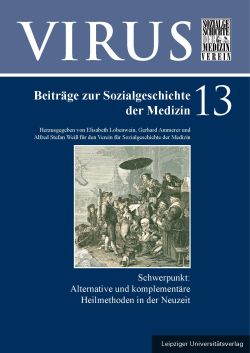
VIRUS Band 13, pp. 015-033, 2020/07/23
Schwerpunkt: Alternative und komplementäre Heilmethoden in der Neuzeit

Cornelis Bontekoe and Steven Blankaart belonged to a new generation of physicians in the Netherlands in the seventeenth century. Using the theories of Cartesianism, they consciously developed a critical attitude towards the authorities of the past. Primarily, it was their ambition to present medical science in a completely new way and to make it accessible to all people, including the interested layman. With that, an innovative vision on the human body and its functions was born. The organism becomes a machine whose life is determined by the activity of the cardiac muscle and great blood circulation. Chemical processes happen in the cardiac veins whose analysis had remained secret to the ancient authorities.In this paper, the work of Bontekoe and Blankaart is analysed by comparing the background of two problems: What was the attitude of the two authors towards the ancient and contemporary authorities and how could the dynamic of their new developed science possibly sweep away even their beloved Cartesian ideas? With which metaphors did the two authors shape a new form of the medical narration which could represent the changes of their science?
Keywords: Dutch medicine of the 17th century, Cornelis Bontekoe (1647–1685), Steven Blankaart (1650–1702), science and literature, Cartesianism and medicine, medical narratives, medical metaphors, respiration and blood circulation in a historical context